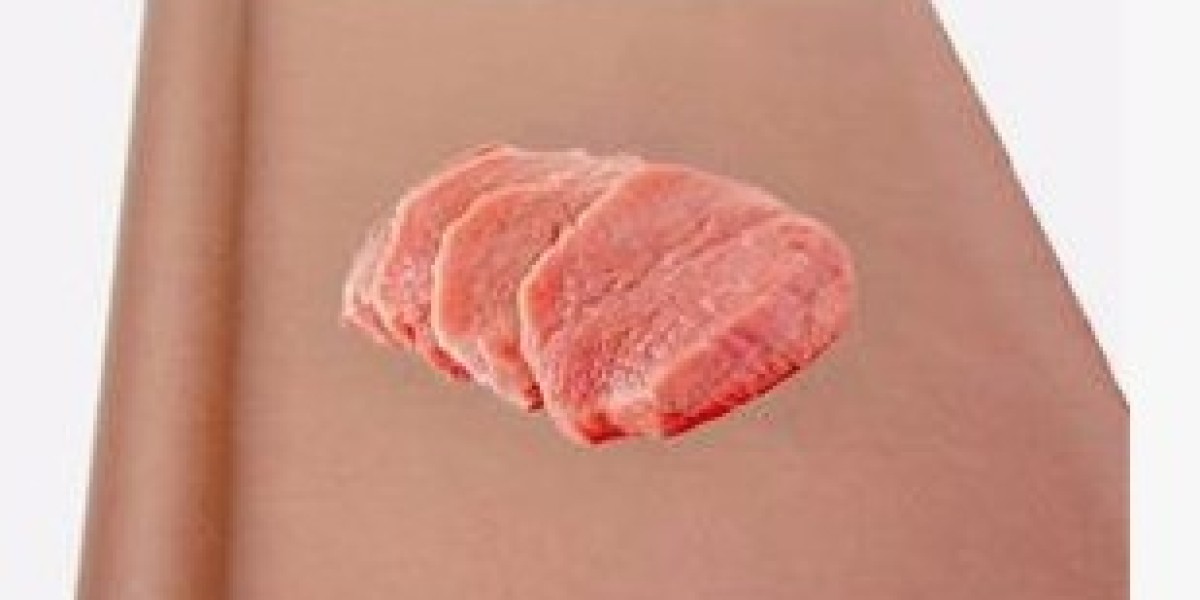Butcher paper rolls have long been a staple in professional kitchens and butcher shops, but their utility stretches far beyond the confines of meat wrapping. From culinary uses to crafts and industrial purposes, butcher paper is a versatile material that’s become indispensable in various settings. This article dives into the practical uses of butcher paper rolls, the different types available, and why they remain an excellent choice for multiple applications.
What is Butcher Paper?
Butcher paper is a heavy-duty, kraft-style paper that is designed to withstand moisture and resist tearing. Traditionally, it was used by butchers to wrap fresh cuts of meat, ensuring that the paper remained intact even when dealing with juices. Its durability and breathability make it an excellent choice for wrapping, preserving freshness, and protecting the food.
Made primarily from wood pulp, butcher paper comes in large rolls that can be easily cut to size. These rolls offer convenience and flexibility, making them suitable for both large-scale operations and smaller household needs.
Different Types of Butcher Paper Rolls
There are several types of butcher paper, each with specific characteristics to suit different purposes. The most common varieties include:
- White Butcher Paper: This is an uncoated type of butcher paper that is food-safe and most commonly used in kitchens for wrapping meats, sandwiches, and cheeses. It’s also popular in craft and art projects due to its clean, white surface.
- Pink or Peach Butcher Paper: Often referred to as "BBQ paper," this is used widely in the grilling community. The paper is unbleached and untreated, allowing it to "breathe" during the cooking process, which enhances the texture and flavour of smoked meats.
- Wax-Coated Butcher Paper: This type is coated with a thin layer of wax, making it ideal for wrapping meats with high moisture content. The wax layer provides an additional barrier against leaking liquids, ensuring that the food stays fresher for longer.
- Freezer Paper: Although not technically butcher paper, freezer paper is closely related. It has a plastic coating on one side, making it ideal for wrapping food that will be stored in the freezer for long periods.
Culinary Uses of Butcher Paper Rolls
Butcher paper’s primary use remains in food preparation, especially in the meat industry. Here are some of the ways butcher paper is used in culinary settings:
- Wrapping Meat for Smoking: Pink butcher paper is a favourite among BBQ enthusiasts, especially when slow-cooking meats like brisket. The paper allows smoke to penetrate the meat while also preserving moisture, unlike aluminium foil, which traps steam.
- Food Packaging: In delis and restaurants, butcher paper is often used to wrap sandwiches, burgers, and other ready-to-eat meals. It’s not only durable but also adds a rustic, artisanal presentation.
- Table Covering: In seafood restaurants, butcher paper is often spread over tables for crab boils and other communal meals. It’s an easy-to-clean alternative to tablecloths and allows for quick disposal once the meal is over.
- Freezing Meat: Wax-coated butcher paper is excellent for wrapping cuts of meat for the freezer. It prevents freezer burn and keeps the food fresh for longer periods compared to plastic wrap or bags.
Beyond the Kitchen Creative and Industrial Uses
Butcher paper rolls aren’t limited to just food applications. Their durability and versatility have made them popular in a variety of non-culinary settings.
- Crafts and Art: Butcher paper is often used as a canvas for artists, especially in classrooms or at art events. Its large size and durability make it perfect for murals, drawing projects, and painting. Additionally, white Custom butcher paper cheap can be customised with paints, markers, and other materials for creative projects.
- Packaging Material: Given its strength and flexibility, butcher paper can also be used as a packing material. It’s an eco-friendly alternative to bubble wrap or foam for protecting fragile items during shipping.
- Table Covering for Events: For large-scale events, butcher paper rolls are commonly used to cover tables. This provides a cost-effective, easily disposable surface that can be replaced quickly between uses.
- Bulletin Board Backing: Teachers and office workers often use butcher paper as a background for bulletin boards and displays. The paper’s durability ensures that it stays in place without ripping, even with multiple pins and tacks.
Why Butcher Paper Rolls Are a Must-Have
Butcher paper rolls offer practicality, durability, and versatility, which is why they remain in demand across different industries. Whether you are wrapping food, covering tables, or engaging in arts and crafts, butcher paper provides a cost-effective solution that is easy to use and environmentally friendly.
One of the key advantages of butcher paper is that it is biodegradable and recyclable, making it a more sustainable option compared to plastic wraps and other synthetic materials. Its natural fibres break down easily, reducing waste in landfills.
Conclusion
Butcher paper rolls are more than just a kitchen essential. Their wide range of uses, from food preparation to crafting and industrial applications, makes them a versatile tool in both professional and domestic settings. With different types available, including pink BBQ paper and wax-coated varieties, butcher paper can cater to specific needs, whether it’s for preserving food or protecting surfaces. Adding butcher paper rolls to your home or business ensures that you have a durable, flexible, and eco-friendly material on hand for whatever task comes your way.










